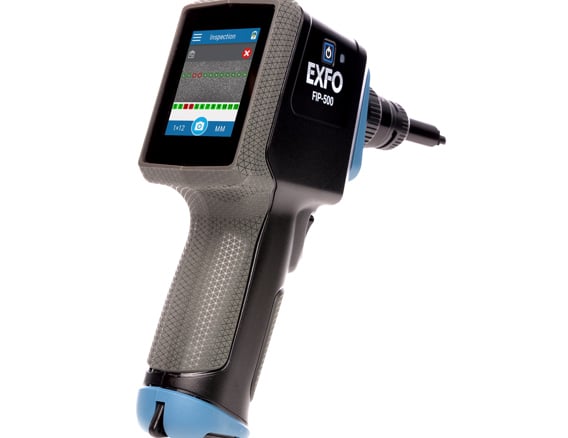How much does robotic vision technology for businesses
All You Need to Find Out About Robotic Vision and Its Applications in Advanced Optical Measurement Equipments
Robotic vision stands for a significant development in the crossway of computer vision, expert system, and equipment knowing. This innovation enhances the precision of optical dimension systems, making it possible for real-time data evaluation and improved quality assurance. Its effect extends multiple markets, from producing to healthcare. However, the developing landscape of robot vision increases concerns about future capabilities and applications (fibre testing equipment). What advancements lie ahead in this transformative field?
Comprehending Robotic Vision: Trick Concepts and Technologies
Robotic vision encompasses the innovations and techniques that make it possible for devices to interpret and comprehend visual information from their environment. This field combines components of computer system vision, expert system, and maker knowing to help with automatic decision-making based on aesthetic information. Trick ideas include image handling, which includes the enhancement and analysis of photos to remove purposeful features, and item recognition, which allows equipments to recognize and classify things within a scene.

The Assimilation of Robotic Vision With Optical Measurement Equipments
As markets progressively require accuracy and effectiveness, the combination of robot vision with optical measurement systems has emerged as a transformative approach. This harmony enables robotics to perceive and translate their surroundings, boosting the ability of optical dimension systems to assess and analyze items with unmatched precision. By gearing up optical sensors with sophisticated imaging innovations, robot vision enables real-time information collection and processing, facilitating instant changes to dimension specifications.
The mix encourages automated systems to discover variants in dimensions, surface area top quality, and alignment, which are crucial in high quality control processes. Improved algorithms, such as artificial intelligence, additional enhance this integration by improving the systems' capability to adapt to different settings and circumstances. Subsequently, the assimilation not just simplifies dimension procedures yet also reduces mistakes, making certain that products meet rigorous market requirements, therefore strengthening the duty of robot vision in the future of optical dimension systems.
Applications of Robotic Vision in Production
In modern-day production settings, the use of vision systems has reinvented production processes by allowing makers to do jobs with impressive accuracy and rate. Robotic vision systems are increasingly used for quality assurance, where they inspect items for defects and guarantee adherence to specifications. These systems utilize video cameras and advanced algorithms to evaluate items in real-time, substantially reducing the risk of human mistake.
In addition, robot vision helps with automation in setting up lines, enabling robots to precisely recognize components and assemble them with very little downtime. This technology likewise boosts inventory administration, as vision systems can check supply degrees and find disparities, assuring a seamless supply chain.
Robotic vision help in the application of clever factories, where information from vision systems can be incorporated with other innovations to maximize process (fibre testing equipment). On the whole, the applications of robotic vision in making demonstrate its critical duty in improving performance, top quality, and efficiency across different fields
Robotic Vision in Medical Care: Reinventing Client Care

In recovery, robot vision help in checking patient progress and informative post customizing treatment sessions to specific needs. It sustains doctor by automating tasks such as information collection and patient tracking, permitting more time to concentrate on straight individual interaction. In addition, robot vision enhances telemedicine by allowing remote medical diagnosis and online examinations, bridging the space in between clients and doctor. Generally, the application of robotic vision in health care is changing patient treatment, bring about enhanced outcomes, performance, and client fulfillment.
Future Trends and Growths in Robotic Vision Technology
The quick development of robotic vision innovation promises to additionally improve its applications across numerous industries, consisting of health care. Future fads indicate a substantial shift in the direction of integrating artificial intelligence and artificial intelligence, enabling systems to find out from substantial datasets and enhance accuracy gradually. Enhanced sensor innovations and deep discovering formulas are expected to fine-tune item recognition capacities, allowing robots to analyze intricate environments a lot more effectively.

Additionally, the assimilation of augmented reality (AR) with robotic vision will likely revolutionize how robotics aid in procedures and diagnostics. This synergy will certainly promote real-time information visualization, improving decision-making processes. In addition, miniaturization of elements will bring about even more portable and versatile robot vision systems appropriate for a selection of tasks. As these improvements unravel, markets will witness enhanced automation and performance, solidifying robotic vision as a keystone of cutting-edge technical services.
Frequently Asked Questions
What Are the Key Components of a Robot Vision System?
The major components of a robot vision system consist of electronic cameras for photo capture, cpus for data evaluation, formulas for analysis, and actuators for motion. With each other, these elements allow robotics to view and communicate with their environment effectively.
Just How Does Robotic Vision Improve Precision in Measurements?
Robotic vision boosts measurement accuracy by utilizing sophisticated imaging innovations, allowing accurate item detection and spatial evaluation. This ability decreases human error, enhances repeatability, and permits Discover More real-time adjustments, ultimately enhancing overall dimension dependability and efficiency.
What Industries Benefit A Lot Of From Robotic Vision Technology?
Different sectors benefit greatly from robotic vision modern technology, including manufacturing, medical care, agriculture, and logistics. These industries make use of improved accuracy, performance, and automation, resulting in boosted performance and minimized functional prices in their particular procedures.
Can Robotic Vision Solutions Operate In Low-Light Conditions?
Robotic vision systems can certainly function in low-light conditions, utilizing advanced sensing units and formulas to improve picture clarity. This capability permits them to carry out effectively in various atmospheres, consisting of industrial content and monitoring applications, despite marginal illumination.
What Are the Prices Linked With Carrying Out Robotic Vision?
The prices connected with executing robot vision differ substantially, influenced by components such as video cameras, software program, and assimilation. Added expenses consist of upkeep, training employees, and potential upgrades to existing systems, which can build up in time.